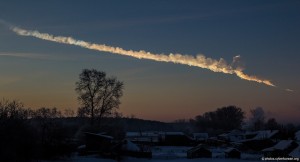It has been over a year since the space rock explosion over Chelyabinsk, Russia.
The February 15, 2013 event damaged thousands of houses and other structures, shattered windows, and injured many people due to broken glass due to the powerful atmospheric blast.
That celestial encounter of the near Earth object (NEO) kind has served as a wake-up call. Earth can be on the receiving end of objects from outer space.
There is new news on the NEO front.
Networking
In December of last year, the UN General Assembly moved forward on establishing an International Asteroid Warning Network (IAWN) and a Space Missions Planning Advisory Group (SMPAG).
Earlier this year, NASA and the European Space Agency (ESA), in collaboration with the UN Action Team – 14 on NEOs, each organized a meeting to formally establish the network and the space agency group. Both meetings advanced significantly the formal establishment of the IAWN and SMPAG.
The role of IAWN is to interface with the relevant international organizations and programs to establish linkages with existing national and international disaster response agencies in order to study and plan response activities for potential NEO impact events
SMPAG is being established by States Members of the United Nations that have space agencies. The group includes representatives of spacefaring nations to lay out the framework, timeline and options for initiating and executing space mission response activities to an Earth-threatening NEO.
Meetings held
On January 13-14 the first meeting of the Steering Committee of the IAWN was hosted by the Minor Planet Center (MPC), at the Harvard-Smithsonian Center for Astrophysics in Cambridge, Mass.
At that meeting, the core membership of an ad hoc Steering Committee was established, and it includes individuals and institutions from: Russia (Institute of Astronomy/Russian Academy of Sciences , France (French National Centre for Scientific Research ), United States (NASA, the Jet Propulsion Laboratory and the MPC), Germany (German Aerospace Center) , ESA and its Space Situational Awareness program; the Netherlands Institute for Space Research, Italy (Institute for Space Astrophysics and Planetology), the International Astronomical Union and the Chair of the Action Team on NEOs.
Following that Massachusetts meeting, the Korea Astronomy and Space Science Institute indicated its intention to join the IAWN.
On February 6-7, in collaboration with the Action Team on Near-Earth Objects, the European Space Agency hosted the first Meeting of the Space Mission Planning Advisory Group (SMPAG) at its European Space Operations Centre (ESOC) in Darmstadt, Germany.
Attending that meeting: AEM(Mexico), ASI (Italy), CNES (France), CSA (Canada), Chile, DLR (Germany), ESA, Ghana, JAXA (Japan), NASA (USA), ROSCOSMOS (Russian Federation), SSAU (Ukraine), UK Space Agency (UK). In addition, representatives of the AT-14 and the UN Office for Outer Space Affairs (UNOOSA) were present.
After the meeting the Romanian Space Agency (ROSA) requested membership and announced its delegation to the SMPAG.
Enhance NEO discovery
For its part, IAWN is to enhance NEO discovery and follow-up observations (e.g. astrometry, photometry and spectroscopy), especially in the Southern Hemisphere, through further international cooperation and coordination.
Specifically, the IAWN should encourage the coordinated use of ground-based telescopes for NEO follow-up observations; incorporate existing assets to bridge gaps in global sky coverage; and, identify and facilitate the coordination of existing capabilities of members that could be utilized more effectively.
Through further international collaboration, the IAWN is designed to establish an international rapid all-sky search capability that is focused on discovering smaller, imminent impactors (e.g., Chelyabinsk event or larger) and the development and operation of a space-based NEO infrared survey telescope to increase the rate of discovery of NEOs by at least an order of magnitude.
NOTE: Special thanks to Sergio Camacho, head of the UN’s Action Team – 14, for providing detailed information used in this article.

